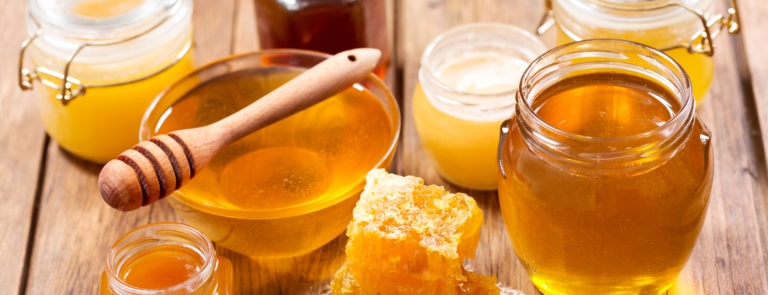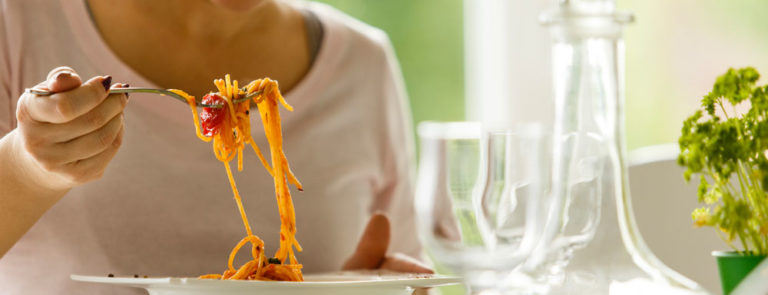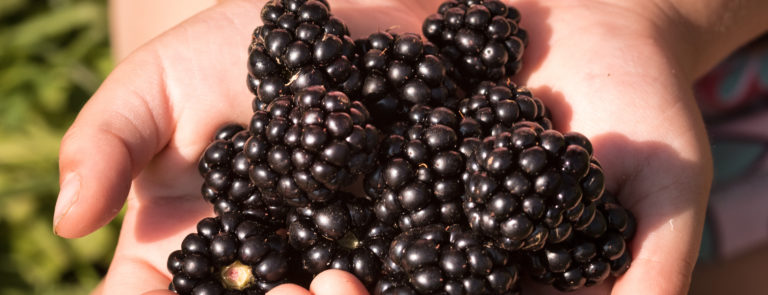Fancy something different on your toast or want to use a natural sweetener in your baking? Then let us introduce you to the wonderful world of honey.
Honey is a naturally sweet and golden liquid that tastes delicious on warm toast and works well in both sweet and savoury recipes. And it also makes a soothing hot drink.
But did you know that there is more than one type of honey?
Honey can vary in colour, taste and consistency depending on the flowers the nectar came from and the time of year it was collected.
As a general rule, honey that is darker and with a stronger flavour is likely to have been foraged in the Autumn. Whereas nectar that is collected in the Spring and Summer produces a lighter, sweeter honey.
Why do bees make honey?
Bees make honey to store in their hives so they can use it as food in the winter months. As the seasons change and the months get colder, there are less flowers for the bees to forage from.
How do bees make honey?
Bees fly from flower to flower collecting a substance called nectar before returning to their hive and turning the nectar into honey. Bees usually only fly within a 4-mile radius of their hive
1 to collect nectar and visit up to 100 flowers on each trip
2.
The bees then store the honey in a honeycomb, which is a structure made up of lots of hexagonal cells that the bees make out of wax.
Once the cells are filled with the nectar, any water within the nectar has to be evaporated. The bees fan the nectar with their wings to help the evaporation process and then they coat the cell with more wax to protect and preserve the honey.
On average, one hive will produce around 29kg of honey per year
3.
How is honey harvested?
Around 60,000 bees live in a colony, which could be a nest or a hive, and a beekeeper will look after them so they can make as much honey as possible: a strong colony can produce 2-3 times more honey than it needs.
4
When it’s time to harvest the honey, the beekeeper will use a smoker to make the bees feel calm and sleepy, so they’re not frightened when the hive is opened. It will also help prevent the beekeeper from getting stung.
The beekeeper will then carefully remove the honeycomb and un-cap it, which is the process of removing the wax coating to expose the honey to be extracted.
Beekeepers are professionals, so they will also always ensure there is enough honey left in the hive to feed the bees over the winter months.
Once extracted from the honeycomb, the honey is then filtered to remove any beeswax or other debris. Raw honey isn’t filtered or altered in any way; however, some honey is sometimes heated to allow it to flow through a filter easily.
What can affect the flavour of honey?
Honey comes in a spectrum of various different colours and flavours which is determined by the type of nectar or flower the bee has visited.
Certain honeys can only be sourced from specific locations in the world.
Manuka honey can only come from the nectar of the Manuka bush, or tea tree, which are only found in New Zealand. And rosemary honeys are traditionally from Spain.
Seasons and the flowers that are blooming can also affect the taste, colour and texture. For example, honey produced in the summer months are usually lighter in taste and colour, vs those that are darker in colour and richer in taste, which are usually from the cooler autumnal months.
Placing the hives near certain flowers or crops can also determine the flavour. A beekeeper may place hives near orange blossoms to ensure the honey produced is flavoured as such.
Check each honey label to discover its sweetness level and source of the nectar to find
which honey is best for you - with so many to choose from, we think you'll have more than one favourite!
Shop Honey
Last updated: 11th February 2020
Sources
1
https://en.wikipedia.org/wiki/Forage_(honey_bee)
2
http://www.honeyassociation.com/about-honey/honey-trivia
3
https://en.wikipedia.org/wiki/Honey
4
https://www.bbka.org.uk/honey 



